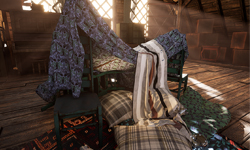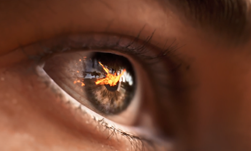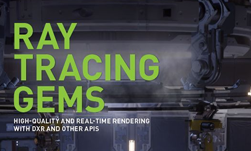We recently kicked off our NVIDIA Developer Program exclusive series of Connect with Experts Ask Me Anything (AMA) sessions featuring NVIDIA experts and Ray Tracing Gems editors Eric Haines, Adam Marrs, Peter Shirley, and Ingo Wald.
During the AMA, the editors offered some valuable guidance and tips on how to successfully integrate real-time rendering. Check out the top five questions and answers from the AMA:
1. Are there some rules of thumb one should follow when adding ray tracing (RT) applications like translucency, reflections, shadows, GI, or diffuse illumination to games?
Adam: There are many things to take into consideration when adding ray-traced effects to a game’s renderer. The main consideration to keep top of mind is for the ray-traced effects to work hand-in-hand with the goals of your game’s art direction. This will change what performance costs are reasonable for any given effect.
For example, if shadows are an important game mechanic (think of Splinter Cell), then a higher cost for extra-nice ray-traced shadows makes sense, but spending extra performance on RT translucency probably doesn’t make as much sense. For guidance on how to balance ray tracing and performance, we have a variety of webinars and other content that you can learn from. In fact, there’s an event coming up about RTX in Unreal Engine 5. (Note that you can access this content on demand.)
2. When sampling direct lighting, both reservoir sampling and resampled importance sampling can be useful techniques. But it seems difficult to recompute PDFs for the sake of MIS when a light has been sampled through a BSDF sample. Could you provide any insights into this problem?
Ingo: Sample importance resampling is only generating samples relative to an existing PDF (that you choose to take these samples). So it should be possible to evaluate that existing PDF to compute PDF values for other samples (in an MIS context).
3. Do ray tracing and deep learning overlap?
Eric: Yes, in many ways. Deep learning can be used to complement ray tracing, “filling in” missing information with plausible interpolated data, such as with NVIDIA Deep Learning Super Sampling (DLSS). This works today.
Neural rendering and neural graphics primitives are hot areas of research currently. One place to start is with Advances in Neural Rendering from SIGGRAPH 2021. Another good resource is a recent overview of NeRF at CVPR 2022, where ray tracing is used to render radiance fields.
4. What’s the latest scoop on using ML training to help with ray-traced GI? Are there any neat advances in ray tracing that benefit from deep learning? Have you connected lower sampling and filtering using an ML upscaling 2D filter?
Adam: There’s been quite a lot of work in the machine learning space to assist with real-time (and not real-time) graphics. For ray-traced global illumination, check out a paper recently published by Thomas Müller, Real-Time Neural Radiance Caching for Path Tracing. Their approach trains a neural network to learn the light transport characteristics of a scene and then builds a light cache that can be queried at a lower cost than tracing the full paths.
5. What are your top three favorite graphics papers of all time?
Adam:
- Ray Tracing Jell-O Brand Gelatin by Paul Heckbert
- Robust Monte Carlo Methods for Light Transport Simulation by Eric Veach
- The Use of Points as a Display Primitive by Marc Levoy and Turner Whitted
Eric:
- The Rendering Equation by James Kajiya
- An Improved Illumination Model for Shaded Display by Turner Whitted
- Multiple Importance Sampling by Eric Veach
Peter:
- Distributed Ray Tracing by Robert Cook et al.
- The Rendering Equation by James Kajiya
- Optimally Combining Sampling Techniques for Monte Carlo Rendering by Eric Veach and and Leonidas Guibas
Ingo:
- Rendering Complex Scenes with Memory-Coherent Ray Tracing by Matt Pharr et al.
- Time Complexity of Monte Carlo Radiosity by Peter Shirley
- Distributed Ray Tracing by Robert Cook et al.
Join the discussion on the NVIDIA Developer Forums. And don’t forget to sign up for the NVIDIA Developer Program to be notified about the next AMA this October on Recommender Systems.
Register for GTC 2022 to learn the latest about RTX real-time ray tracing. For a full list of content for game developers including tools and training, visit NVIDIA Game Development.









